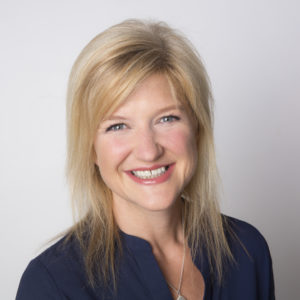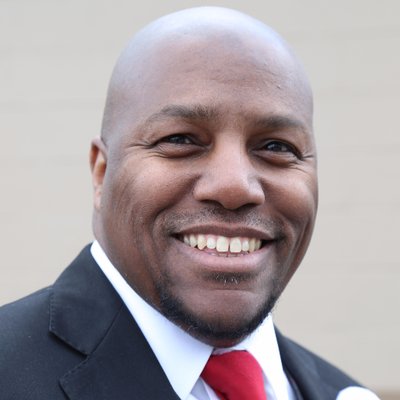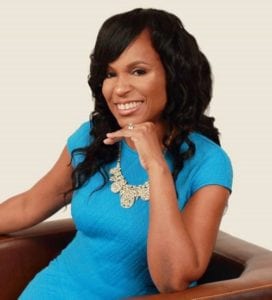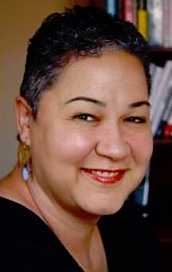 Every week as SmallBizLady, I conduct interviews with experts on my Twitter talk show #SmallBizChat. The show takes place every Wednesday on Twitter from 8-9 pm ET. This is excerpted from my recent interview with LaShonda Bracey on selling your products and services to the Federal Government. She is an author of Your A-Z Guide to Government Contracting. As CEO & President of Health-Works and ASAP Training and Course Development. For more info: www.LaShondaBracey.com
Every week as SmallBizLady, I conduct interviews with experts on my Twitter talk show #SmallBizChat. The show takes place every Wednesday on Twitter from 8-9 pm ET. This is excerpted from my recent interview with LaShonda Bracey on selling your products and services to the Federal Government. She is an author of Your A-Z Guide to Government Contracting. As CEO & President of Health-Works and ASAP Training and Course Development. For more info: www.LaShondaBracey.com
SmallBizLady: Who can qualify for a government contract?
LaShonda Bracey: Any legal business that sells products and services to private sector, except liquor and check cashing companies can sell their products and services
to the Federal Government. The government is the largest corporation in the world and more small businesses should be using the opportunity to grow their business through government contracting.
SmallBizLady: What advice would you give someone who’s brand new to government contracting?
LaShonda Bracey: As you are getting started with government contracting identify your ideal client. Let’s be clear. You can’t market to everyone. Oftentimes, small businesses fall into the trap of trying to register for every government agency under the sun. Consistently study the market and stay on top of your ideal client’s radar. Remember, it’s your niche that makes you rich. Research, Market, and Network with those Ideal clients. You cannot sell your products or services to everyone.
SmallBizLady: Can you recommend some really quality sites for our listeners?
LaShonda Bracey: Individual State Procurement Sites are a great resource right now as our economy is changing and shifting, there are tons of opportunities that are being overlooked on the state level.
SmallBizLady: What big mistakes do you see others make when it comes to trying to do business with the federal government?
LaShonda Bracey: Not being registered and completing the paperwork properly. As a small business desiring to work with the world’s largest conglomerate—the federal government—you must be registered properly. The process is tedious – there are a lot of I’s to be dotted, and T’s to be crossed, in the contracting process. So your paperwork must be thorough. The government can’t take risks on the businesses they work with.
SmallBizLady: In your experience, what’s the best way to get your first government contract?
LaShonda Bracey: In order to get your first contract, you must do your due diligence as a small business owner. You have to be diligent and stay abreast of the latest industry information. In most cases background information is readily available through the Federal Procurement Data System-Next Generation. After identifying a potential opportunity where your business can best serve take a step back and process requirements. Pull your paperwork, applicable resources, get to writing and respond timely. Whatever you do, don’t miss deadlines.
SmallBizLady: Do you have a formula for gaining and winning contracts?
LaShonda Bracey:
- Strategy: Know what you are getting yourself into
- Perseverance: Know that you won’t win every opportunity you go after
- Persistence: Don’t be alarmed or disappointed if someone doesn’t call you back right away. You have to show you are persistent and interested in the work, but not annoying.
SmallBizLady: What are some of the key points you look for when searching for opportunities?
LaShonda Bracey:
- Key #1 – Make sure the opportunity is right for you and your organization.
- Key #2 – Make sure it’s an opportunity you can deliver on.
- Key #3 – You don’t ever want to be in a position where you can’t produce on a government contract.
SmallBizLady: What would you say is the one more important thing you’ve learned?
LaShonda Bracey: Build lasting relationships with clients. In the government contracting space relationships are key. When a client remembers you and the type of work you do they will continue to seek out your products and services. I had a few clients leave one particular agency, settled at their new positions and needed assistance. This allowed me to gain contracts with two other agencies Amtrak and the Securities Exchange Commission.
SmallBizLady: What do you think are the keys to becoming a successful government contractor?
LaShonda Bracey:
- 1st – Have past performance. Make sure your capabilities statement speaks for itself and send it to the right people at the right agency.
- 2nd – Network Correctly. A key mistake that small businesses make is not networking with government procurement officers. Don’t think that business will just come to you.
- 3rd – Put the work in. Small businesses don’t see themselves as marketers when actually, they’re walking and talking billboard for their business.
- 4th – Keep Following Up. A response from a client should never be assumed to be an irrevocable no, think of it as not yet. It’s important to stay optimistic.
SmallBizLady: Please share one or two of your favorite, and most helpful resource links?
LaShonda Bracey:
- gov – where the majority of your opportunities will be located
- gov – where you can do extensive research on your competition
- gov – where you can get training and access PTAC centers to get leads.
SmallBizLady: What’s the first thing you recommend our readers do after they’re read this interview?
LaShonda Bracey: Make sure you’re keeping proper accounting records, register with www.SAM.gov and start marketing your products and services to the agencies that best fit in your wheel house.
If you found this interview helpful, join us on Wednesdays 8-9 pm ET; follow @SmallBizChat on Twitter.
Here’s how to participate in #SmallBizChat: http://bit.ly/1hZeIlz
The post How to Sell Your Products and Services to the Federal Government appeared first on Succeed As Your Own Boss.
 Every week as
Every week as  Every week as
Every week as  Every week as
Every week as 
 July 12th – How to Hit Your Financial Target This Month,
July 12th – How to Hit Your Financial Target This Month,  July 19th – Independent Retailers vs. Amazon – 7 Tips to Compete,
July 19th – Independent Retailers vs. Amazon – 7 Tips to Compete,  July 26th – Why Focused Collaboration is the New Business Currency ,
July 26th – Why Focused Collaboration is the New Business Currency ,  Every week as
Every week as  August 2nd – Temperament and Consulting for Small Businesses,
August 2nd – Temperament and Consulting for Small Businesses,  August 9th – How to Enjoy Your Life More as a Woman Entrepreneur,
August 9th – How to Enjoy Your Life More as a Woman Entrepreneur,  August 16th – How to Build a Profitable Business While Working Your Full-Time Job,
August 16th – How to Build a Profitable Business While Working Your Full-Time Job,  August 23rd – 6 Principles to Becoming a Happy Entrepreneur,
August 23rd – 6 Principles to Becoming a Happy Entrepreneur,  August 30th – Financial Basics – the FEW Numbers Every Small Biz Owner Should Track,
August 30th – Financial Basics – the FEW Numbers Every Small Biz Owner Should Track,  Every week as
Every week as  Every week as
Every week as  Every week as
Every week as  Every week as
Every week as  September 6th – How to Launch and Grow a Product Based Brand,
September 6th – How to Launch and Grow a Product Based Brand,  September 13th – How to Have a Greater Impact in Your Small Business,
September 13th – How to Have a Greater Impact in Your Small Business,  September 20th – Be Unforgettable: 6 Tips to Creating A Brand Experience,
September 20th – Be Unforgettable: 6 Tips to Creating A Brand Experience,  September 27th – How to Get Your Business Unstuck,
September 27th – How to Get Your Business Unstuck,  October 4th – How to Make Your Business Scalable, Saleable and Sustainable, @theceoeffect
October 4th – How to Make Your Business Scalable, Saleable and Sustainable, @theceoeffect October 11th – How Your Business Can Benefit from The Mobile Small Business Finance and the Digital Future, @RohitBiz2Credit
October 11th – How Your Business Can Benefit from The Mobile Small Business Finance and the Digital Future, @RohitBiz2Credit October 18th – How to Create Your Signature Speaker Style, @RubenWest360
October 18th – How to Create Your Signature Speaker Style, @RubenWest360 October 25th – How to use Referral Marketing to Expand Your Social Capital, @ErnaneIung
October 25th – How to use Referral Marketing to Expand Your Social Capital, @ErnaneIung





